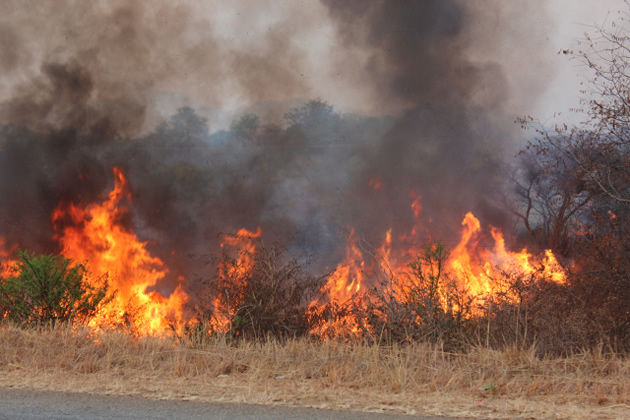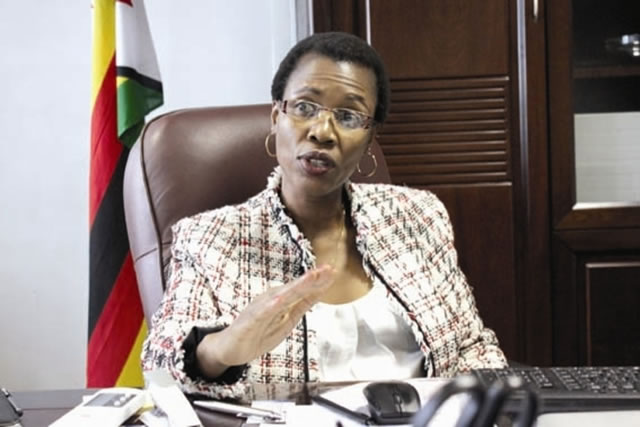Are we ready become a cashless economy?

Charles Dhewa
Evidence from agricultural markets suggests a cashless economy requires a country to have reached a certain level of development. In Zimbabwe it seems a cashless economy is being pushed by a few organisations and people trying to introduce digital technology into the medium of exchange without a nuanced understanding of ordinary people’s financial knowledge base.
A medium of exchange such as money has certain characteristics that cannot be done away with or digitised. These have to do with an attachment to human senses — touch, counting, seeing and budget allocation. For instance, we cannot completely do away with physical counting and rely entirely on visualising money in a mobile phone.
Apparently, there has not been any investment in building formulae for breaking the culture in which human beings have related with money for generations. We can’t use technology to break that culture. Traditionally, barter trading had embedded medium of exchange values unlike technology which just shows figures. In the absence of meaningful explanations, ordinary people are wondering whether economically powerful organisations and people are trying to control them by withholding cash from circulating.
Our society has not developed structures for financial literacy. For instance, in the agricultural sector, the focus is on production skills at the expense of soft skills like deal-making, business and basic economics. Key ministries like Finance, Health, Agriculture and Social Welfare lack such structures through which knowledge can be filtered and layered according to different needs and levels.
In the education system, financial literacy should not just expose children to dollars and cents, notes and coins. Instead, they should empower school children to understand economic changes at their levels.
As if that is not enough, we have a blame game between Government, the private sector and other actors, especially regarding the causes of inflation, unemployment and other challenges. This blame game masks the location of real problems. Farmers blame input providers and the market while input providers and retailers blame lack of foreign currency. This shows that when we lack proper tools and methodologies, we end up blaming each other instead of collaborating in generating solutions.
A multi-currency regime was widely embraced in 2009 but the disappearance of foreign currency is raising many questions, especially among the financially illiterate who are the majority.
This is worsened by the fact that the concept of bond notes has not been properly explained to ordinary people, beyond advertisements in the media. Many farmers are still not sure what is the difference between bond notes and previous bearer cheques? More questions being asked include: What has happened to the US$ which is now disappearing? What caused the introduction of plastic money? What if a cashless economy becomes a pyramid scheme? What would happen if mobile money suddenly collapses? What if one day we wake up with banks having collapsed? What if many farmers convert their livestock into cash and suddenly money becomes valueless or mobile money transactions malfunction?
Another source of suspicion is the fact that some banks are now opening bank accounts in the street. When people don’t see the face of a financial institution they begin to query the authenticity of the process. Financial inclusion is not just about persuading people to open bank accounts. Some measure of protectionism is critical for building confidence, for instance, licencing those who handle money.
If the right infrastructure was available, transporters, cross-border traders, medical facilities and formal companies which handle a lot of transactions daily would have rolled out a cashless economy. The fact that this has not happened makes it impossible for ordinary people to do so, especially given that they do not handle a lot of cash daily. Doctors and lawyers do not seem to have fully embraced a cashless economy either.
In the agricultural sector, the fact that plastic money has been introduced on the inputs side and not rolled out along the entire value chain into markets is making it difficult for farmers to recoup their production costs. Production costs do not care whether the output market is fragmented or inefficient. As a result, after purchasing inputs or obtaining production capital, the majority of farmers are failing to go back to the land as poor markets erode the whole income and working capital.
On the other hand, more competition than collaboration is stifling a knowledge sharing culture but promoting individualism. Where sharing the real pain points makes sense, industry actors and chamber of commerce often share superficial content. It seems where a few companies dominate like in the poultry industry, beverages and seed industry, knowledge sharing is more effective. In an industry with too many players, information and ideas tend to be fragmented. Ideas are stolen from those who will have invested a lot in generating and perfecting them. For instance, the development sector is rife with NGOs rushing to implement ideas from other organisations. As a result there is no meaningful innovation but recycling of ideas.
Lack of financial literacy is hindering the adoption of plastic money. Local leaders like traditional chiefs and members of Parliament should be capacitated to interpret financial knowledge to local communities. This is because people tend to look up to leadership for solutions. Unfortunately, discussions in Parliament are often dominated by a few members while the rest remain quiet. Farming as a business should include financial and economic literacy than telling farmers what they already know. Traditionally, farmers were satisfied with the practice of banks paying interest. They were not interested to know what else was done with their money in the bank. That has changed as we are now in a hide and seek economy where, instead of earning interest, savers are charged for putting money in a bank.
Community knowledge centres can be used as centres of socio-economic literacy and social intelligence. Through these local institutions, decision making and resource allocation should be decentralised so that communities can deal with challenges at their level. Decision making should move closer to points of impact and that can happen through fostering social intelligence, enabling people to make intelligent choices.
This will relieve pressure on the fiscus unlike the current situation where communities expect Government to repair their bridges when this could simply be done at community level.
Excessive dependence on experts also weakens local people’s capacity to value their resources without using money as the main proxy. How can communities make collective decisions in valuing their commodities and natural resources when their sources of information remain fragmented irrespective of billions of dollars spent in their name?
Farmers need to know the value of their commodities beyond money. What is the true value of a crate of tomatoes or a goat if produced well? It is not enough to say it’s worth $8. What does a dollar mean in relation to potatoes, tomatoes, chickens, fruits, milk, goats, sheep, cattle and other assets?
The majority of developing countries currently don’t have models for understanding commodity values without using dollars and cents. However, nothing stops policy makers and development agents from considering other factors like nutrition, healthy, wealth creation potential, environmental contribution and multiple uses in valuing local resources before getting to dollars and cents. What is the socio-economic value of a commodity before it is given a dollar value? What is its environmental value? Tobacco is valued in dollars and cents without considering environmental and other factors. Same with minerals. After taking all these factors into account, it should be possible to assign specific weights to commodities from which comprehensive valuation can be derived.
Supply and demand should not be used alone to determine the value of agricultural commodities. When there is a glut of tomatoes, for instance, it doesn’t mean the nutritional value, taste and quality of the tomatoes will have gone down. The same amount of water, labour and inputs will have been used to produce it. Where the monetary value of livestock on the market will have gone down due to over-supply, it does not mean a reduction in value because the cattle will have consumed the same grass, water, labour and other inputs as those fetching high prices during shortages.
What is the value of an irrigation scheme in terms of land, water, soils, the environment, customers and other factors? Answering this question factually will reveal benefits and costs, taking into account people, animals, wildlife and other elements of the whole ecosystem in which the irrigation scheme is located. Irrigation water, soil and labour have alternative uses. Correct valuation will show the extent to which resources are either being over-utilised or under-utilised for the sake of earning dollars. When Government allocates resources to the Ministry of Health, it considers the importance of human life. The value of a good road network influences the size of budget allocated to the Ministry of Transport.
Likewise, the value of agricultural commodities should influence budgetary allocations to the Ministry of Agriculture. How do developing countries value investment opportunities, minerals, land and associated benefits? In the absence of smart valuation criteria, developing countries limit their valuation to money and equipment brought by investors yet these may constitute a small part of the value of resources. Investors end up assuming a big brother mind-set because they bring money and equipment.
Charles Dhewa is a proactive knowledge management specialist and chief executive officer of Knowledge Transfer Africa (Pvt) (www.knowledgetransafrica.com) whose flagship eMKambo (www.emkambo.co.zw ) has a presence in more than 20 agricultural markets in Zimbabwe. He can be contacted on: [email protected]; Mobile: +263 774 430 309 / 772 137 717/ 712 737 430.











Comments